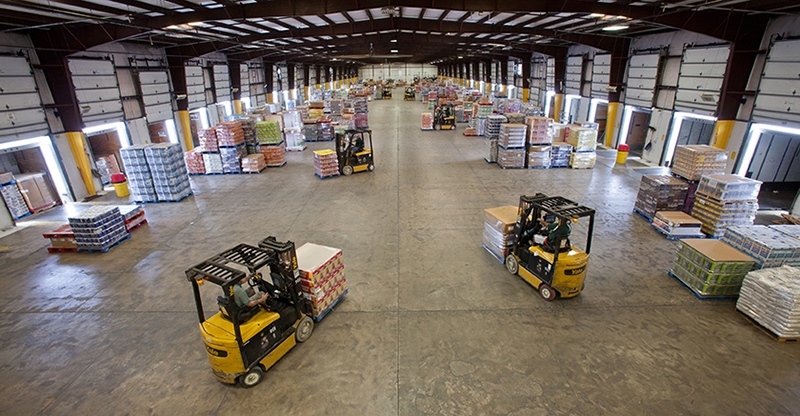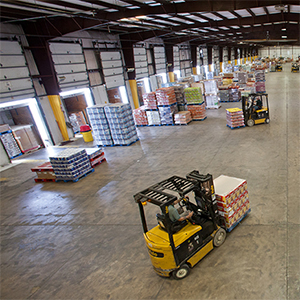Capitalizing on Cross-Docking

Today's marketplace is moving faster than ever, and companies are challenged to distribute their products more quickly, efficiently and cost-effectively; cross-docking can be a useful tool to help keep pace with customer demand.
While cross-docking is not a new phenomenon, this process of moving material from the receiving dock straight to the shipping dock is gaining traction as more companies recognize its value in today’s competitive business environment.
Why Cross-Dock?
Companies choose to cross-dock for a variety of reasons.
Common benefits include:
Increased speed to market - With high turn rates and reduced handling, cross-docking helps to increase efficiency and get products to market faster. While typically associated with durable goods, cross-docking can be effective for temperature-controlled, perishable and high-value/high-security products as well, thanks to its high velocity.
Reduced costs - Cross-docking requires a smaller footprint than traditional warehousing and often utlizes less labor as well. The practice also eliminiates the cost of inventory and product rotation. Considerable freight savings can be achieved by consolidating LTL shipments into full loads.
Improved service levels - Because product is shipped in bulk and picked at the cross-dock, the practice offers great flexibility for changes to orders further down the supply chain. This helps to ensure a more accurate - and more responsive - process with shorter order cycles.
Prime Candidates for Cross-Docking
Just about any type of product can be cross-docked, but cross-docking is particularly effective for companies that are moving heavy volume on any given day and need to do it in a precise way where service is critical.
While products that are typically full-pallet-in, full-pallet-out are most easily cross-docked, less-than-pallet quantities also can work although they are more labor intensive.
Cross-docking makes the most sense when:
Current order cycles and traditional distribution methods cannot handle customer needs.
Outdated distribution strategies and networks create extended cycle times and compromise shelf-life guarantees.
Inefficient distribution networks create plant inefficiencies.
Transportation networks become over-extended, creating unacceptable on-time performance rates at excessive cost.
- Distribution cost increases outpace sales growth.
To determine if cross-docking is a viable option, it can be helpful to discuss best practices, evaluable current operations and explore potential challenges with an experienced cross-dock provider.
Improvements to the Practice
At Saddle Creek, we have been operating successful cross-docks for more than 30 years. Our cross-dock customers include a wide range of well-known companies in a variety of industries.
We are continually refining our operations to make cross-docking an even more effective option for our customers. Some recent improvements include:
Wireless technology improvements make it easier to track trailers and improve yard productivity.
System enhancements have improved visibility of order tracking.
- Dock layout enhancements and process improvements allow products to move through our cross-dock operations even faster.
Cross-docking can be an effective way to take costs out of the system, manage inventory levels, increase efficiencies and satisfy changing customer demand.
Article Topics
Saddle Creek Logistics Services News & Resources
Saddle Creek Logistics Services heralds warehouse expansion in four U.S markets Saddle Creek announces plans to open up new Las Vegas-based DC Saddle Creek Logistics Services preps to open up new Kentucky-based e-commerce fulfillment DC Utilizing Omni-channel Fulfillment Distribution Networks to Build Customer Relationships Tackling an Omni-Channel World Ultimate Cross-Docking Guide Graduation Source Streamlines Fulfillment Operations More Saddle Creek Logistics ServicesLatest in Transportation
Baltimore Bridge Collapse: Impact on Freight Navigating Amazon Logistics’ Growth Shakes Up Shipping Industry in 2023 Nissan Channels Tesla With Its Latest Manufacturing Process Why are Diesel Prices Climbing Back Over $4 a Gallon? Luxury Car Brands in Limbo After Chinese Company Violates Labor Laws The Three Biggest Challenges Facing Shippers and Carriers in 2024 Supply Chain Stability Index: “Tremendous Improvement” in 2023 More Transportation













